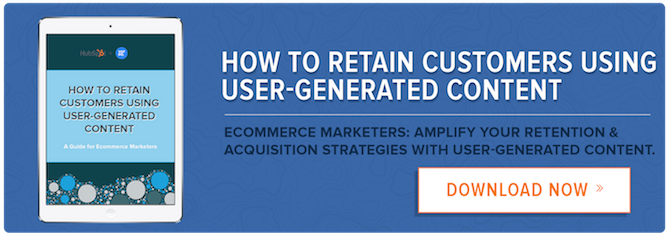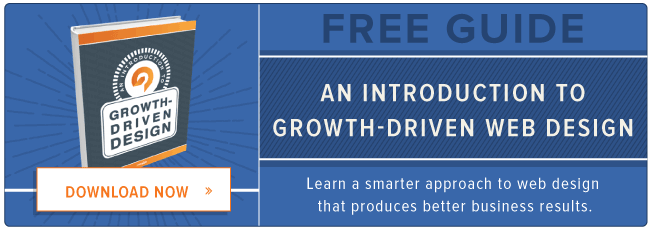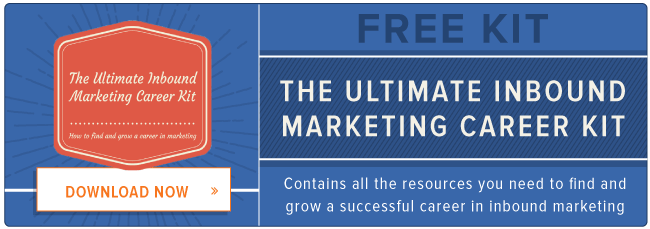Posted by MatthewBarby
[Estimated read time: 10 minutes]
The traditional ways of measuring the success or failure of content are broken. We can't just rely on metrics like the number of pageviews/visits or bounce rate to determine whether what we're creating has performed well.
“The primary thing we look for with news is impact, not traffic,” says Jonah Peretti, Founder of BuzzFeed. One of the ways that BuzzFeed have mastered this is with the development of their proprietary analytics platform, POUND.
POUND enables BuzzFeed to predict the potential reach of a story based on its content, understand how effective specific promotions are based on the downstream sharing and traffic, and power A/B tests - and that's just a few examples.
Just because you've managed to get more eyeballs onto your content doesn't mean it's actually achieved anything. If that were the case then I'd just take a few hundred dollars and buy some paid StumbleUpon traffic every time.
Yeah, I'd generate traffic, but it's highly unlikely to result in me achieving some of my actual business goals. Not only that, but I'd have no real indication of whether my content was satisfying the needs of my visitors.
The scary thing is that the majority of content marketing campaigns are measured this way. I hear statements like “it's too difficult to measure the performance of individual pieces of content” far too often. The reality is that it's pretty easy to measure content marketing campaigns on a micro level - a lot of the time people don't want to do it.
Engagement over entrances
Within any commercial content marketing campaign that you're running, measurement should be business goal-centric. By that I mean that you should be determining the overall success of your campaign based on the achievement of core business goals.
If your primary business goal is to generate 300 leads each month from the content that you're publishing, you'll need to have a reporting mechanism in place to track this information.
On a more micro-level, you'll want to be tracking and using engagement metrics to enable you to influence the achievement of your business goals. In my opinion, all content campaigns should have robust, engagement-driven reporting behind them.
Total Time Reading (TTR)
One metric that Medium uses, which I think adds a lot more value than pageviews, is "Total Time Reading (TTR)." This is a cumulative metric that quantifies the total number of minutes spent reading a piece of content. For example, if I had 10 visitors to one of my blog articles and they each stayed reading the article for 1 minute each, the total reading time would be 10 minutes.
“We measure every user interaction with every post. Most of this is done by periodically recording scroll positions. We pipe this data into our data warehouse, where offline processing aggregates the time spent reading (or our best guess of it): we infer when a reader started reading, when they paused, and when they stopped altogether. The methodology allows us to correct for periods of inactivity (such as having a post open in a different tab, walking the dog, or checking your phone).” (source)
The reason why this is more powerful than just pageviews is because it takes into account how engaged your readers are to give a more accurate representation of its visibility. You could have an article with 1,000 pageviews that has a greater TTR than one with 10,000 pageviews.
Scroll depth & time on page
A related and simpler metric to acquire is the average time on page (available within Google Analytics). The average time spent on your webpage will give a general indication of how long your visitors are staying on the page. Combining this with 'scroll depth' (i.e. how far down the page has a visitor scrolled) will help paint a better picture of how 'engaged' your visitors are. You'll be able to get the answer to the following:
“How much of this article are my visitors actually reading?”
“Is the length of my content putting visitors off?”
“Are my readers remaining on the page for a long time?”
Having the answers to these questions is really important when it comes to determining which types of content are resonating more with your visitors.
Social Lift
BuzzFeed's “Social Lift” metric is a particularly good way of understanding the 'virality' of your content (you can see this when you publish a post to BuzzFeed). BuzzFeed calculates “Social Lift” as follows:
((Social Views)/(Seed Views)+1)
Social Views: Traffic that's come from outside BuzzFeed; for example, referral traffic, email, social media, etc.
Seed Views: Owned traffic that's come from within the BuzzFeed platform; e.g. from appearing in BuzzFeed's newsfeed.

This is a great metric to use when you're a platform publisher as it helps separate out traffic that's coming from outside of the properties that you own, thus determining its "viral potential."
There are ways to use this kind of approach within your own content marketing campaigns (without being a huge publisher platform) to help get a better idea of its "viral potential."
One simple calculation can just involve the following:
((social shares)/(pageviews)+1)
This simple stat can be used to determine which content is likely to perform better on social media, and as a result it will enable you to prioritize certain content over others for paid social promotion. The higher the score, the higher its "viral potential." This is exactly what BuzzFeed does to understand which pieces of content they should put more weight behind from a very early stage.
You can even take this to the next level by replacing pageviews with TTR to get a more representative view of engagement to sharing behavior.
The bottom line
Alongside predicting "viral potential" and "TTR," you'll want to know how your content is performing against your bottom line. For most businesses, that's the main reason why they're creating content.
This isn't always easy and a lot of people get this wrong by looking for a silver bullet that doesn't exist. Every sales process is different, but let's look at the typical process that we have at HubSpot for our free CRM product:
- Visitor comes through to our blog content from organic search.
- Visitor clicks on a CTA within the blog post.
- Visitor downloads a gated offer in exchange for their email address and other data.
- Prospect goes into a nurturing workflow.
- Prospect goes through to a BOFU landing page and signs up to the CRM.
- Registered user activates and invites in members of their team.
This is a simple process, but it can still be tricky sometimes to get a dollar value on each piece of content we produce. To do this, you've got to understand what the value of a visitor is, and this is done by working backwards through the process.
The first question to answer is, “what's the lifetime value (LTV) of an activated user?” In other words, “how much will this customer spend in their lifetime with us?”
For e-commerce businesses, you should be able to get this information by analyzing historical sales data to understand the average order value that someone makes and multiply that by the average number of orders an individual will make with you in their lifetime.
For the purposes of this example, let's say each of our activated CRM users has an LTV of $100. It's now time to work backwards from that figure (all the below figures are theoretical)…
Question 1: “What's the conversion rate of new CRM activations from our email workflow(s)?”
Answer 1: “5%”
Question 2: “How many people download our gated offers after coming through to the blog content?”
Answer 2: “3%”
Knowing this would help me to start putting a monetary value against each visitor to the blog content, as well as each lead (someone that downloads a gated offer).
Let's say we generate 500,000 visitors to our blog content each month. Using the average conversion rates from above, we'd convert 15,000 of those into email leads. From there we'd nurture 750 of them into activated CRM users. Multiply that by the LTV of a CRM user ($100) and we've got $75,000 (again, these figures are all just made up).
Using this final figure of $75,000, we could work backwards to understand the value of a single visitor to our blog content:
((75,000)/(500,000))
Single Visitor Value: $0.15
We can do the same for email leads using the following calculation:
(($75,000)/(15,000))
Individual Lead Value: $5.00
Knowing these figures will help you be able to determine the bottom-line value of each of your pieces of content, as well as calculating a rough return on investment (ROI) figure.
Let's say one of the blog posts we're creating to encourage CRM signups generated 500 new email leads; we'd see a $2,500 return. We could then go and evaluate the cost of producing that blog post (let's say it takes 6 hours at $100 per hour – $600) to calculate a ROI figure of 316%.
ROI in its simplest form is calculated as:
(((($return)-($investment))/($investment))*100)
You don't necessarily need to follow these figures religiously when it comes to content performance on a broader level, especially when you consider that some content just doesn't have the primary goal of lead generation. That said, for the content that does have this goal, it makes sense to pay attention to this.
The link between engagement and ROI
So far I've talked about two very different forms of measurement:
- Engagement
- Return on investment
What you'll want to avoid is actually thinking about these as isolated variables. Return on investment metrics (for example, lead conversion rate) are heavily influenced by engagement metrics, such as TTR.
The key is to understand exactly which engagement metrics have the greatest impact on your ROI. This way you can use engagement metrics to form the basis of your optimization tests in order to make the biggest impact on your bottom line.
Let's take the following scenario that I faced within my own blog as an example…
The average length of the content across my website is around 5,000 words. Some of my content way surpasses 10,000 words in length, taking an estimated hour to read (my recent SEO tips guide is a perfect example of this). As a result, the bounce rate on my content is quite high, especially from mobile visitors.
Keeping people engaged within a 10,000-word article when they haven't got a lot of time on their hands is a challenge. Needless to say, it makes it even more difficult to ensure my CTAs (aimed at newsletter subscriptions) stand out.
From some testing, I found that adding my CTAs closer to the top of my content was helping to improve conversion rates. The main issue I needed to tackle was how to keep people on the page for longer, even when they're in a hurry.
To do this, I worked on the following solution: give visitors a concise summary of the blog post that takes under 30 seconds to read. Once they've read this, show them a CTA that will give them something to read in more detail in their own time.
All this involved was the addition of a "Summary" button at the top of my blog post that, when clicked, hides the content and displays a short summary with a custom CTA.

This has not only helped to reduce the number of people bouncing from my long-form content, but it also increased the number of subscribers generated from my content whilst improving user experience at the same time (which is pretty rare).
I've thought that more of you might find this quite a useful feature on your own websites, so I packaged it up as a free WordPress plugin that you can download here.
Final thoughts
The above example is just one example of a way to impact the ROI of your content by improving engagement. My advice is to get a robust measurement process in place so that you're able to first of all identify opportunities, and then go through with experiments to take advantage of the opportunity.
More than anything, I'd recommend that you take a step back and re-evaluate the way that you're measuring your content campaigns to see if what you're doing really aligns with the fundamental goals of your business. You can invest in endless tools that help you measure things better, but if core metrics that you're looking for are wrong, then this is all for nothing.
Sign up for The Moz Top 10, a semimonthly mailer updating you on the top ten hottest pieces of SEO news, tips, and rad links uncovered by the Moz team. Think of it as your exclusive digest of stuff you don't have time to hunt down but want to read!









